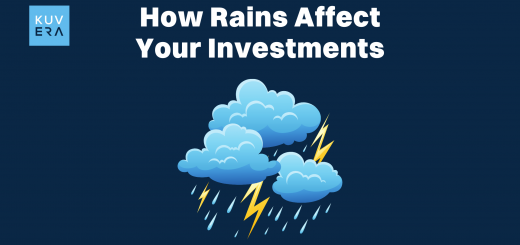New Funds Offer (NFO) in mutual funds, much like initial public offerings (IPOs) in the stock market, mark the launch of a brand-new mutual fund scheme. They invite investors to participate in the fund’s journey from its inception. While the thought of “getting in early” can be enticing, NFOs should be approached with a discerning eye.
This guide explores the key factors to evaluate before investing in an NFO, helping you make informed decisions and enhancing your mutual fund return.
Understanding NFOs
An NFO is the first public offering of a mutual fund scheme. Asset Management Companies (AMCs) introduce these funds to raise capital for a specific investment objective and strategy. Unlike established funds with a performance track record, NFOs lack a track record. This makes thorough due diligence even more critical for investors seeking to maximise their mutual fund return potential.
Key Factors to Assess Before Investing in an NFO
1. Investment Objective and Strategy
The cornerstone of any successful investment is alignment with your financial goals. Carefully scrutinise the NFO’s stated investment objective and strategy. Does it aim for aggressive growth, capital preservation, or a specific sector focus? Ensure the fund’s aim resonates with your investment goals and risk tolerance.
Pro Tip: If you’re a conservative investor seeking stable income, an NFO focused on high-growth small-cap stocks might not be suitable. Instead, an NFO targeting fixed-income securities or a balanced approach with a higher debt allocation might be more appropriate.
2. Fund Manager’s Expertise
The fund manager is a key factor in determining the success of any mutual fund. While NFOs lack a fund-specific track record, review the fund manager’s experience and past performance with other funds they have managed. Seek a fund manager with a proven track record of success in managing similar strategies or asset classes.
Pro Tip: If an NFO focuses on technology stocks, a fund manager with a strong background in technology sector investing and a history of generating alpha (returns exceeding the benchmark) would be a positive indicator. Research suggests that fund manager skills can significantly contribute to a fund’s performance, particularly in actively managed funds.
3. AMC’s Reputation and Track Record
The reputation and track record of the AMC launching the NFO are crucial factors to consider. Research the AMC’s overall performance, investment philosophy, and commitment to investor interests. A well-established AMC with a history of strong performance and ethical practices can inspire greater confidence.
Pro Tip: AMCs with a proven track record of launching successful funds and consistently outperforming benchmarks are more likely to manage NFOs effectively. Look for AMCs with a strong research team, robust risk management practices, and a commitment to transparency. Studies have shown a correlation between an AMC’s overall investment culture and the performance of its funds.
4. Expense Ratio
The expense ratio represents the annual fee charged by the AMC to manage the fund. It can significantly impact your mutual fund return over the long term. Compare the NFO’s expense ratio with similar existing funds to ensure it’s competitive. Lower expense ratios often lead to higher net returns for investors.
Pro Tip: If an NFO has an expense ratio significantly higher than comparable existing funds with similar strategies, it could erode your returns over time. Look for NFOs with reasonable expense ratios that align with industry standards. Research by Morningstar has consistently shown that funds with lower expense ratios tend to outperform their higher-cost counterparts over the long run.
5. Investment Horizon
Consider your investment horizon before investing in an NFO. NFOs, like any investment, require time to mature and generate returns. An NFO might not be the most suitable option if you have a short-term investment goal. Align your investment horizon with the fund’s investment strategy and your financial goals.
Pro Tip: If an NFO focuses on long-term growth sectors like infrastructure or renewable energy, it might be more suitable for investors with a longer-term investment horizon, allowing the fund to capitalise on the growth potential of these sectors over time. Historical data suggests that long-term investing tends to yield better results, particularly for growth-oriented funds.
6. Risk Profile
Every mutual fund carries inherent risks. Carefully assess the risk factors associated with the NFO, considering the fund’s investment strategy, asset allocation, and target sectors. Ensure that the risk profile aligns with your risk tolerance and investment objectives.
Pro Tip: An NFO investing in emerging markets or volatile sectors like technology carries higher risk compared to a fund investing in established blue-chip companies or fixed-income securities. Understand the potential risks and ensure they are within your comfort zone. Studies have shown that investors who align their investments with their risk tolerance are more likely to achieve their financial goals.
7. Unique Value Proposition
Evaluate whether the NFO offers a unique value proposition or fills a gap in the existing mutual fund landscape. Does it offer access to a niche sector, a unique investment strategy, or a differentiated approach to managing risk? If the NFO doesn’t offer anything new or compelling, investing in an established fund with a proven track record might be a more prudent choice.
Pro Tip: An NFO that focuses on a specific theme like ESG (environmental, social, and governance) investing or a niche sector like artificial intelligence could offer a unique value proposition, attracting investors seeking exposure to those specific areas. Research indicates that thematic funds can provide significant growth potential if the underlying theme aligns with long-term economic trends.
8. Beyond the Hype
NFOs are often accompanied by marketing campaigns and promotional materials. Look beyond the hype and critically evaluate the fund’s potential based on objective criteria. Don’t be swayed by marketing gimmicks or promises of guaranteed returns.
Focus on the fund’s fundamentals, investment strategy, and alignment with your financial goals. Studies have shown that investors often make emotional decisions based on marketing hype, which can lead to suboptimal investment outcomes.
NFOs and Mutual Fund Return: A Calculated Approach
While NFOs can offer attractive investment opportunities, it’s essential to approach them with a calculated and informed perspective. Don’t get swept away by the novelty of a new fund. Thoroughly research the NFO, compare it with existing funds, and ensure it aligns with your investment goals and risk tolerance. Making informed decisions can enhance your mutual fund return and achieve your financial goals.
Investors need to understand the nuances of NFOs and conduct thorough research. By doing this, investors can confidently make informed decisions and navigate the world of mutual funds India.
Create wealth with SIP.
Wrapping Up
Investing in NFOs requires a discerning and informed approach. While the allure of new beginnings can be strong, investors should prioritise thorough research and careful evaluation. While the Indian mutual fund market offers a diverse range of NFOs, presenting enticing new investment avenues, it is crucial to remember that thorough research and careful evaluation are paramount.
Investors seeking to optimise their mutual fund returns should diligently assess an NFO’s investment objective, the fund manager’s expertise, the AMC’s track record, and the associated risks before committing their capital.
Ultimately, a well-informed approach to NFOs can empower investors to capitalise on opportunities while mitigating potential risks, paving the way for a successful investment journey in the dynamic landscape of mutual funds India.
Interested in how we think about the markets?
Read more: Zen And The Art Of Investing
Watch here: All About Defence Mutual Funds












